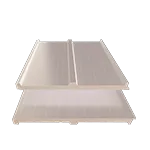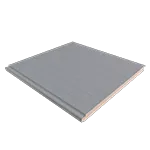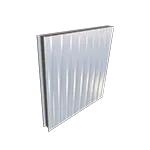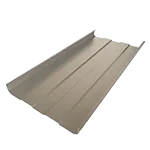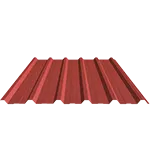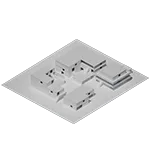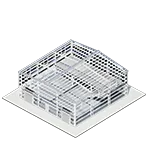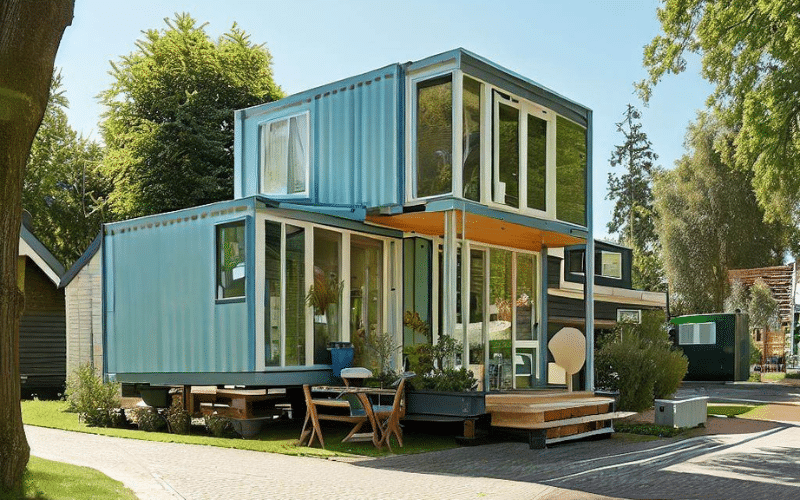Abstract
The construction industry keeps reinventing itself with new solutions and taking advantage of optimization, low impact or recycling and reuse trends that many people demand.
Expressions such as “low ecological impact”, “carbon footprint” and “reuse” are some of the mantras that a significant percentage of the population is incorporating into their daily lives.
This is why the construction industry innovates in offering products adapted to the new demands and tastes of this part of society and tries to seduce it through two approaches: prefabricated products (optimization of the construction process) and the use of containers for the transport of goods by sea (reuse and recycling of existing elements).
In Europe, the predominant trend has always been towards recycling, while in North America, solutions have been sought using prefabrication.
In this article we will look at the main advantages and disadvantages of each of these systems, as well as learn a little about the philosophy behind them.
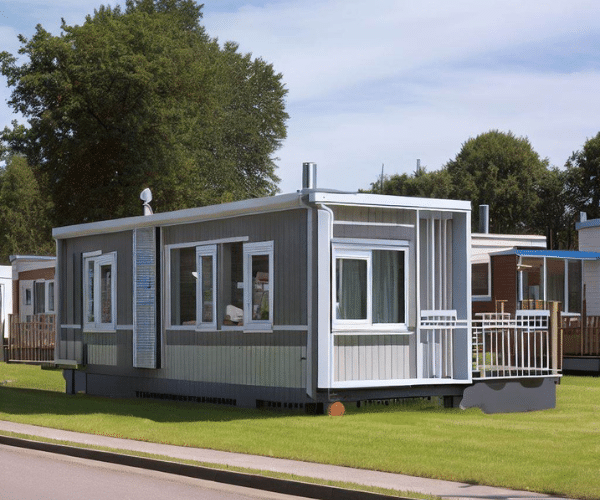
Buildings using shipping containers
Trends come, go, transform, and come again. Many years ago, in the 70’s and 80’s, strong pro-environmentalist movements and groups of people who wanted a different way of living in community, gained strength in some Nordic nations, mainly in the Netherlands, as well as in certain cities in the State of California (USA). This was the embryonic premise of a pro-environmental movement that is now growing by leaps and bounds.
Its fundamental objective is the reuse or recycling of all types of materials. Taking these initiatives to the field of architecture, construction, and urban planning, we have examples such as the Keetwonen neighborhood (Amsterdam, The Netherlands).
Keetwonen is a student neighborhood that began to be built by reusing shipping containers. Housing in buildings of up to 5 levels, with green spaces and services between buildings. It is a dormitory town that has become an icon and a must-see for tourists in the city.
Their concept: To install reused shipping containers, using auxiliary secondary structures to ensure the stability of the containers stacked at various heights.
It was necessary to prepare and adapt the containers to generate the right thermal comfort conditions inside them. A careful design and an experiment with students, who live for short-medium periods and, it must be said, they are less demanding in terms of finishes and qualities than a family-type user. Despite this, the housing units in Keetwoonen have very good design and reasonable qualities.
Other examples include housing for homeless people in Brighton, UK, four-star hotels in Nigeria, and a hotel for aid workers in Haiti after the storm.
The possibilities of this system go as far as our imagination can take us. From a sales module to large housing and hotel complexes.
Given its recent popularity and the importance it is gaining, the following are the 5 main advantages and disadvantages of the container system:
Advantages of containers
- Shipping containers are built to withstand extreme temperatures and conditions.
- It is an important way to give a new use to containers that have already completed their service cycle, reducing environmental impact.
- As they are elements designed to facilitate their transportation, it makes their handling and transfer very simple and with many guarantees.
- The construction process tends to significantly reduce execution times and, what for many is important: it reduces the money needed.
- The containers are designed to have good load-bearing behavior, making them a stable module, with good structural performance and great durability.
Inconveniences of containers
- Due to their size and weight, it is necessary to use special equipment for their handling: small cranes, medium-large trucks, forklifts, etc.
- Proper maintenance over time is required. The containers are made of special steels, but they still need a maintenance plan appropriate to the area and weather conditions to which they are exposed.
- They have standard, predetermined dimensions. As long as modulation is used without much variation of the elements, cost optimization is achieved, but if special measures and designs that break the standard framework of its dimensions are necessary, it is not a very adaptable product.
- They are not recommended in areas with high temperatures, since the humid interior air tends to create condensation and form rust with the metal. The insulation inside the modules, in order to reach the necessary comfort standards and make them habitable, should be made with appropriate materials and executed by professionals.
- In some cities there are regulatory restrictions on this type of housing. A prior investigation should be made with the responsible authorities before undertaking this type of project.
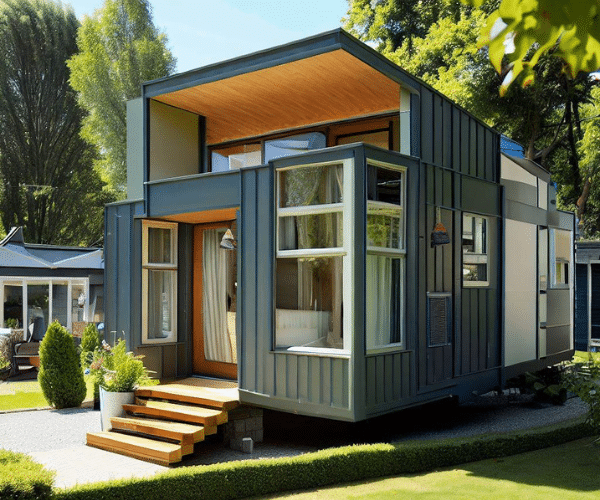
Prefab homes
Prefabrication seeks the maximum optimization and reuse of manufactured parts in a plant with controlled conditions. This system uses materials that are monitored at all times of the production processes, focusing on the maximum use of raw materials and quality control to avoid what is most common in any building work: waste of materials.
For those who do not come from the world of construction, prefabricated systems may sound very recent, but the truth is that they have been used for many years in the U.S. There was a time in the 40’s and 50’s when the housing deficit was enormous, so to reduce it they promoted incentives in the development of housing projects with prefab homes.
Although it is true that its beginnings were for the middle class, over the years it has focused its production on lower-income neighborhoods, although this has begun to change since the 2000s, thanks to product innovation with higher quality perceived by the buyer.
This approach has many positive aspects, which has allowed it to be an industry in constant growth. Its detractors see the standardization and continuous repetition of models as their main criticism of the system.
But let’s see what the 5 advantages and 5 disadvantages of this construction system really are.
Advantages of prefab homes
- They are more economical than traditionally built houses. In some cases it can represent up to 50% savings in the total cost for houses of the most economical segment.
- Design can be tailored to different needs and potential buyer profiles
- It is made under a controlled and very efficient construction process with high quality standards in its manufacture. It is a more standardized product and it is accepted by regulators for its use.
- Considerable reduction of prices and shorter lead time
- Adapts very well to different types of climates. Efficient thermal and acoustic insulation.
Disadvantages of prefab homes
- Lack of exclusivity in the design. Its standardization as a product makes it a fairly recognizable element.
- Homes are usually designed and manufactured for a maximum of 3 levels. It is a market primarily for single-family homes or duplex apartments.
- Banks and insurance companies, due to their lack of knowledge of the system, are usually reluctant to finance the acquisition of this type of homes and insure them.
- In some cases, it is difficult to break the barrier of the unfounded prejudice that prefabricated means poor quality. In most cases, it is quite the opposite! This false belief is more common in countries where these systems are relatively new, as in some Latin American and Caribbean countries.
- They do not have a very good resale price, and their appreciation is usually below that of a conventional home.
So, container or prefabricated homes?
The development of housing in the current demand for housing alternatives is leading to a segmentation of products demanded by an increasingly larger group.
The reuse of containers as a building product has its main drivers in the Nordic countries, which have achieved with it, a kind of brand characteristic of their homes. More and more companies are emerging with more premium products, seeking to reach a consumer with greater purchasing power.
Prefab homes are at a point of market maturity. The United States, Canada, and the United Kingdom are the largest consumers in terms of annual units sold. They are also societies that know the benefits of the product and are very familiar with them.
Prefabricated materials seek efficiency in the production of low-cost housing, while the use of containers is based on the reuse of products that have already fulfilled their life cycle, and that allow a new usage to avoid the consumption of more raw materials.
Although both models took off in response to the need for affordable housing for the lower segment of the income pyramid, more and more efforts are being made to achieve a product that is difficult for the unprofessional eye to distinguish from conventionally built homes.
If we had to pick a winner, prefab homes would definitely take the “gold” in this category, not only because it is a product that is born from its initial design to respond to a specific need, but also because it allows its production on a more effective and efficient scale.
In either case, the winner is our society by optimizing the use or reuse of materials and reducing energy consumption.
